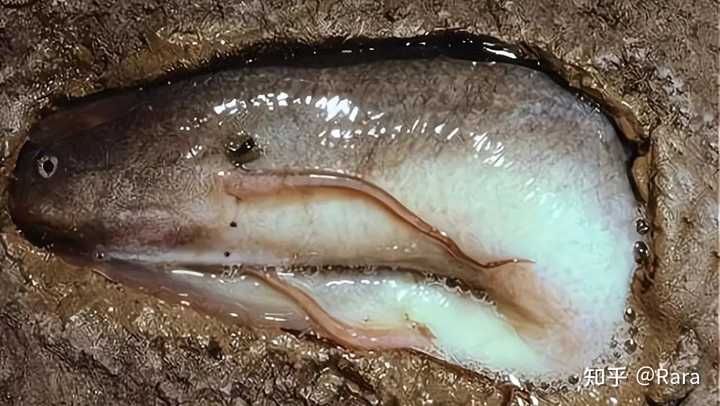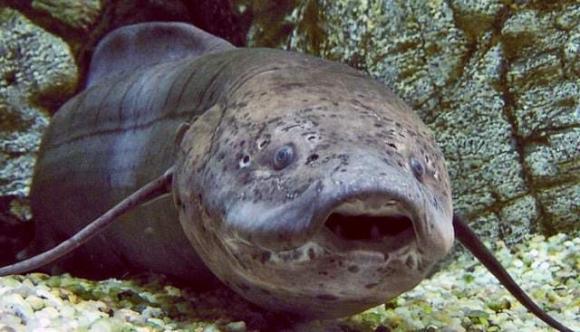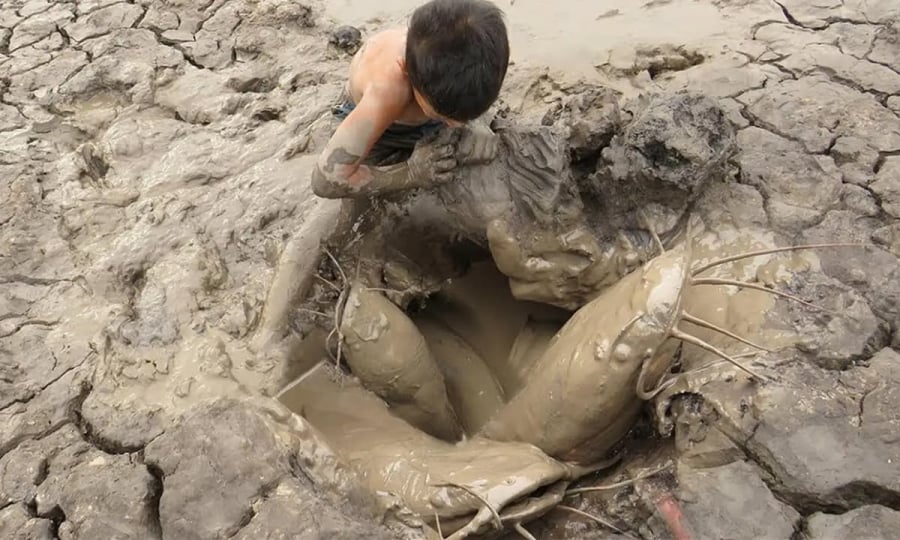The African lungfish is an extraordinary creature, a true evolutionary wonder with remarkable survival capabilities. With the ability to survive for years on land without water or food, this ancient animal offers a fascinating insight into extreme adaptability.
Lungfish, or “living fossils” as scientists call them, have remained largely unchanged for approximately 390 million years. Primarily found in the Bandama River of Côte d’Ivoire and the swamps of Africa, these fish are well adapted to harsh drought conditions.
Resembling an eel, the lungfish has a mottled brown-olive skin tone, but its most distinctive feature is its possession of both gills and true lungs. Due to the low oxygen levels in the water, lungfish frequently surface to breathe air, an unusual behavior for a fish. This unique respiratory system is what allows them to survive in completely dry environments.

When faced with drying rivers or prolonged dry seasons, instead of migrating, the lungfish displays an incredible survival strategy. It burrows into the mud, creating a deep hole, and then secretes a thick layer of mucus over its entire body, leaving only a small opening near the mouth for breathing.
As the mucus dries, it forms an extremely durable and waterproof “cocoon,” allowing the lungfish to enter a state of reduced physiological activity known as aestivation, similar to hibernation in cold-climate animals. Astonishingly, lungfish can remain in this state for up to 4-5 years without water or food, emerging unscathed.

In 2018, researchers began studying the composition of the lungfish’s cocoon to understand its survival mechanism. They discovered that granulocytes, a type of white blood cell, play a crucial role in the lungfish’s survival strategy. These cells slowly and continuously migrate from the fish’s skin into the cocoon, creating a trap that immobilizes bacteria, providing protection against infections.

When the rains return and water seeps into the mud, reaching the lungfish’s mouth, it awakens. Breaking free from its cocoon, the lungfish expels waste accumulated during its dormancy. Within about 10 days, its organs fully recover, and it resumes its aquatic life as if it had never aestivated at all.
A remarkable story of survival and adaptation, the African lungfish showcases nature’s incredible ability to endure and persist.
The Fish that Lives: Thriving in the Desert for 5 Years Without Water
In the arid desert, a peculiar fish can survive in a state of suspended animation for up to five years, enduring the drought. With the arrival of a rare rainfall, these tiny creatures spring to life, swimming as if they had never vanished. This remarkable phenomenon has captivated both scientists and nature enthusiasts alike, leaving them awe-inspired.

































